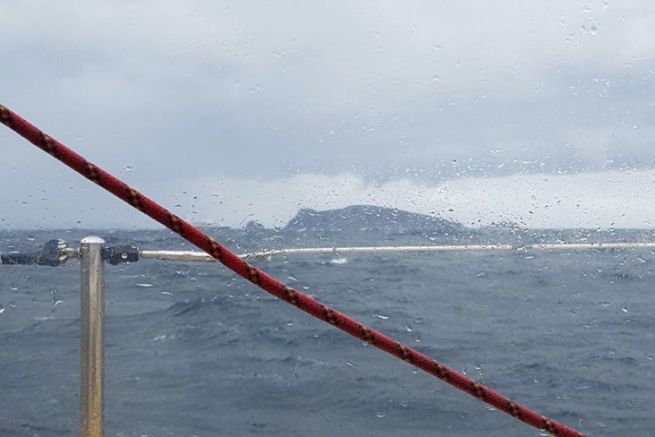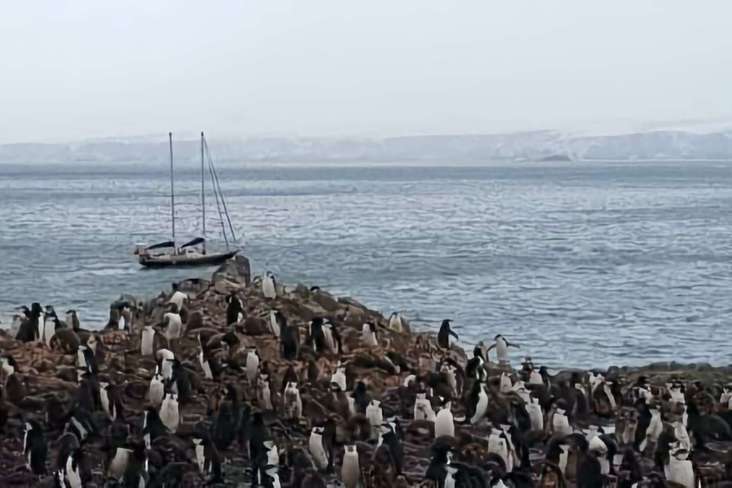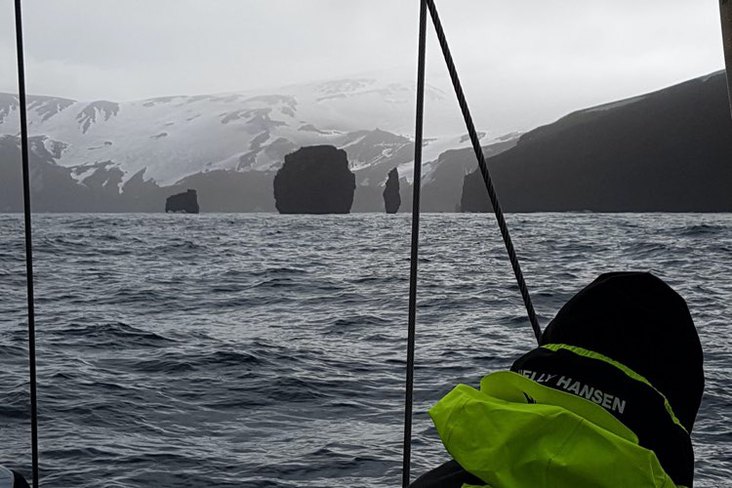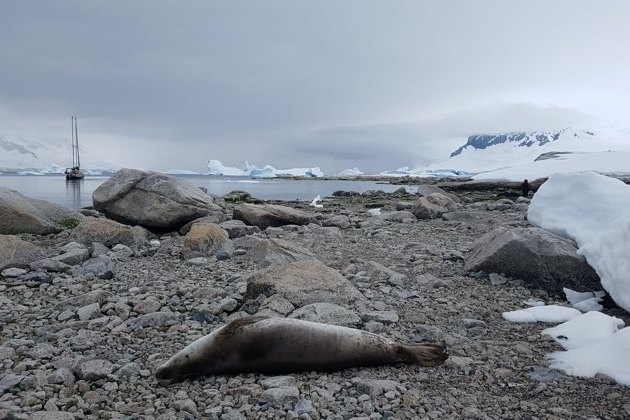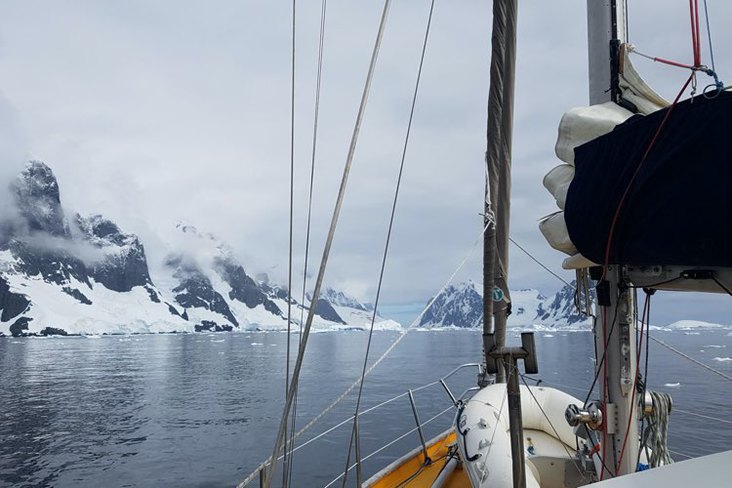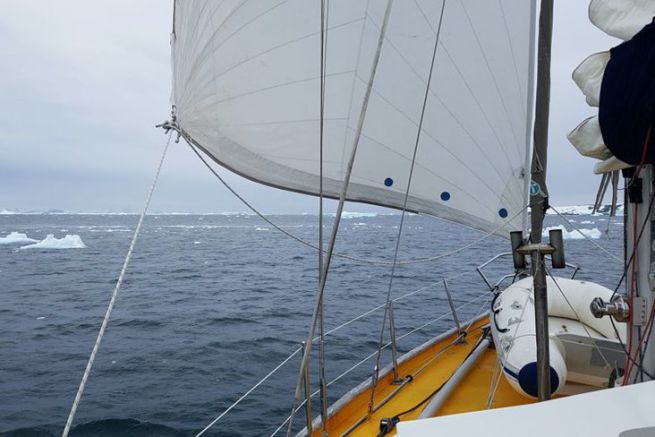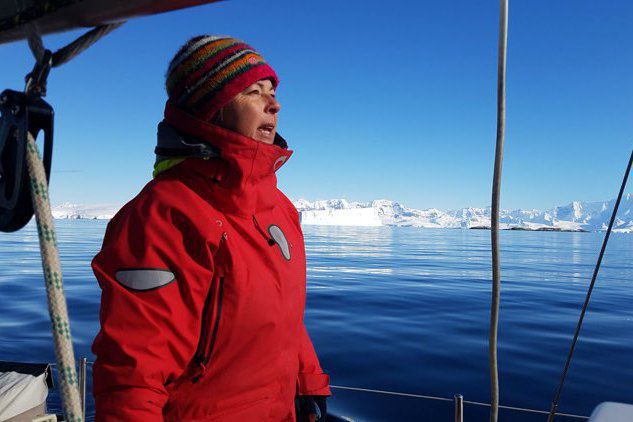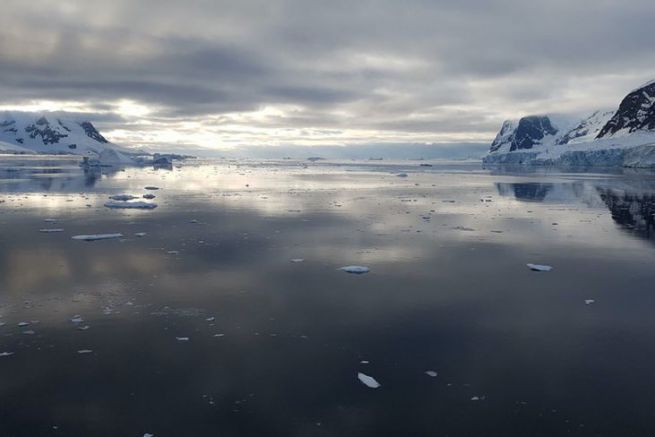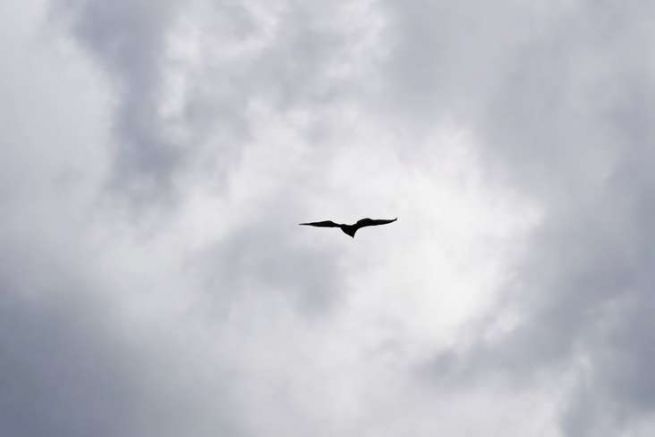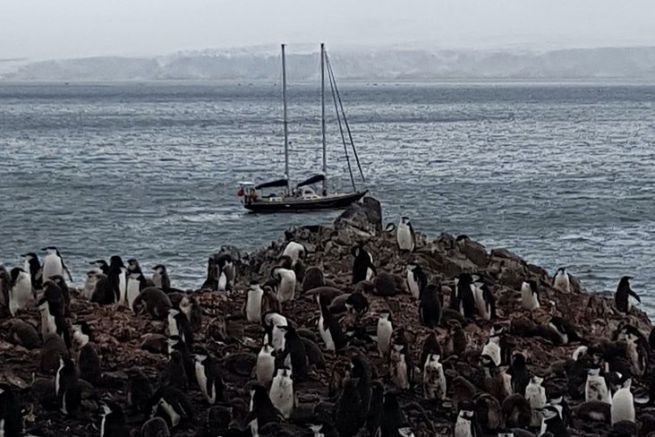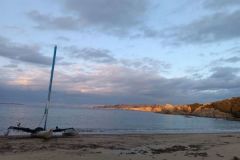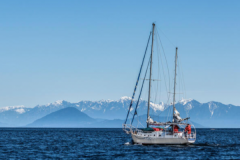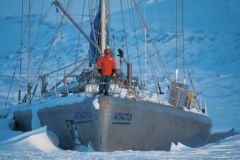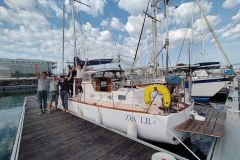Finding a boarding point for sailing to Antarctica is possible. This dream is accessible. But it is advisable to take a few precautions before embarking on the adventure on a boat you don't know. The story of Dominique, Carole and Sara, forced to disembark after a collision with the water in a hostile zone, is an experience rich in lessons.
We have selected a few points of technical problems encountered on board to see how they were dealt with on other yachts sailing in these remote areas. The answers are often edifying..

The length of the anchorage
The schooner used by Dominique had 50 m of mooring chain. In many situations this one seemed quite short. By way of comparison, Jean-François Delvoye of the Boréal shipyard, a specialist in the construction of polar expedition yachts, has at least 100 m of chain in the anchor locker of his boats, which are lighter aluminium yachts that are nevertheless less than 50 feet long.
Spare parts
Sailing in remote areas such as Antarctica, where assistance is no longer possible, means having a large number of spare parts on board in order to deal with all emergency situations. The essential engine parts go far beyond the "consumables" (filters/oils). It is also essential to have: a feeding pump, a seawater pump for cooling, a cooling water circulation pump, a complete set of spare injectors, a thermostat... On the schooner, there was not even a spare diesel filter. A part which is however the basis of the mechanical parts. An irreparable engine in Antarctica or in the canals of Patagonia, the whole boat is lost!
Eric Dupuis, who has been sailing on Vaïhéré in this area since 1992, tells us that he is "... a very good sailor can't even tell how many spare filters he has, there's so many on board! "Similarly Brice, the skipper of Podorange, a second professional boat sailing in these waters, says he even has a spare complete injection pump. It's a long way from the bottom of a WD40 bottle that was on the schooner..
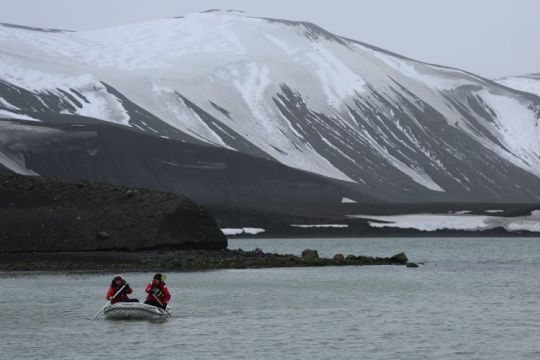
The tender and its engine
A dinghy is mandatory to land ashore. In these waters where the weather can change very quickly, a dinghy that is seaworthy and well motorized is required. The schooner is equipped with a Bombard AX300 which is approved for 3 persons by its builder for a crew of 6 persons. In the same way this semi-rigid can receive an outboard motor of 8 hp maximum. The one on board that finally broke down was a 9.9 hp, much too heavy and powerful for this small tender!
Accompanying persons on passenger boats who disembark tourists, even disembark equipment to make a bivouac in case they could not come back on board due to heavy seas (tents, food, medical kit...). Without going that far, having a good engine in working order is also essential for safety. On Vaihiere, Éric Dupuis specifies that each dinghy has an emergency repair kit on board in addition to an anchor, a floating anchor and distress lights. Above all, the tenders are often the target of the Leopard seals, which can puncture the sails with their teeth. This is why Vaïhéré's dinghy never sails alone, but always accompanied by a second capable of quickly recovering all the crew in the event of an attack.
A dry suit and scuba tanks
No diving equipment was available on board the schooner. Diving in very cold water (close to zero) requires adequate equipment even for a very short shallow dive. Yet sailing in these poorly charted waters, the risk of grounding is great. This is what happened on the schooner, which was unable to check the condition of its hull after grounding on a rock.
On board Vaïhéré, there is always a dry suit and a scuba tank. It's always useful for " remove an end in the propeller or solve a problem with an anchor stuck at anchor ", says Éric Dupuis, " And we even have 2 spare propellers on board and epoxy for underwater repair.. ".
Security Briefing
You don't have to sail to Antarctica to know that a security briefing is required for all new arrivals on board. Nothing of the sort was practiced on the schooner, not the slightest bit of information given despite the request of crewmember Sara. Nothing about the location of the lifejackets, pyrotechnics, the emergency beacon or the raft. Perhaps this little check could have brought to light the malfunctioning of the vests or the lack of the beacon's revision on the date indicated? Even when they were embarked for a few days aboard the Ocean Atlantic, Dominique, Carole and Sara received this famous briefing on their new host boat?

Respect for the environment in the Antarctic zone
In order to get the authorization to sail in Antarctica, the captain of the schooner had to send a request to the TAFF (Terres australes et antarctiques françaises) in which he indicated the composition of the crew, the equipment of the sailboat as well as the planned program. In this document, it is indicated the instructions to limit the impact on the environment (fauna and flora). For example, it is requested to empty its black water tanks beyond 12 miles from any coast or presence of ice. Obviously the schooner was not equipped with one..
Similarly, it is widely stipulated that animals should not be approached within 5 m when landing, always move aside in their path and never stress them. When a cruise ship disembarks its tourists (often in groups of 100 - the maximum allowed), they are guided on a route marked out by stakes and cones. A scientist is posted every 10 m to provide information to passengers, but above all to avoid disturbing the animals ( Careful, sir, you have to let that penguin through before you commit.. "). Thus the passengers are numerous, but their impact on land is really limited.
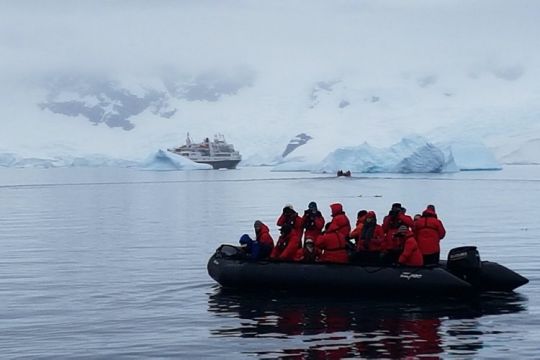
Avoiding contagions
Logically, and as strictly required by the TAAFs, all equipment that has touched down must be cleaned after each return on board. Thus for each disembarkation, passengers on the liners are equipped with life jackets, boots and oilskin trousers (or even jackets) before each disembarkation on land. When they return on board, they leave all this equipment in the hold to be cleaned before the next disembarkation. This rigour is important in order to avoid spreading microbes within the animal colonies.
On the schooner, the captain just asked to rinse the soles of the boots on the way back, not for germs, but so as not to dirty the boat with penguin droppings, indeed this smell is strong and unpleasant.
Cleaning up the charter market
Eric Dupuis de Vaïhéré explains that it's becoming increasingly difficult to fit out a sailing boat for chartering in Antarctica. Indeed, to have a professional activity in this area, insurance (the one that the schooner lacks?) costs 25,000 euros per year. In addition, the Securitas security visit costs 12,000 euros in these waters. Anyone who would like to discover the splendours of this continent of ice can request these documents from the organisation offering boarding. They can also ask for the skipper's (or skippers') diplomas. In Vaïhéré's wardroom, all these documents are displayed for all to see. On this yacht, the professional crew is always composed of 2 qualified skippers and an equally competent crew member. Eric recounts that during his last 2019-20 campaign in Antarctica, a well-known charter boat in this zone saw its skipper evacuated urgently because of a haemorrhage. The clients were left alone for 5 days with the captain's girlfriend, whose first trip to Antarctica was his first, as "first mate". We had to wait for the boat's owner, who was in Australia, to fly to Ushuaia, jump on the first cruise ship leaving for Antarctica and finally get back on track, fortunately successfully.
In contrast to professional boats, associations offer so-called "non-profit" cruises, often working out of passion. But this is not enough to ensure the safety of passengers who are not aware of the dangers involved. Sailing to Antarctica remains a committed journey, an adventure of course, but one that can be mastered to some extent by knocking on the right doors.


